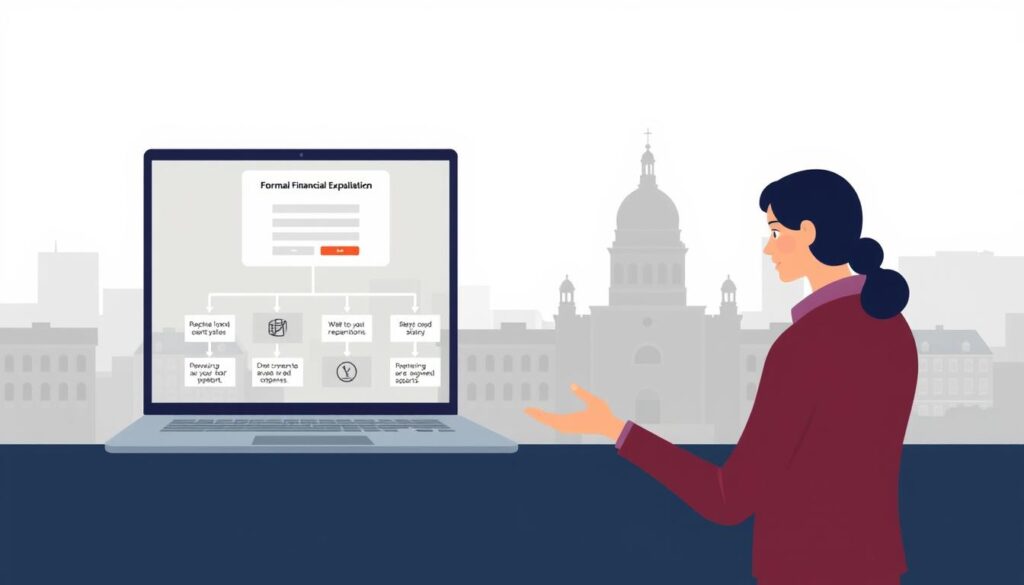Table of Contents
Over $530 million was lost to financial exploitation in Canada in 2023 alone. This staggering figure highlights a growing threat: unauthorized transactions draining accounts through in-store purchases, online scams, or compromised ATMs. While technology offers convenience, it also creates opportunities for criminals to exploit personal data.
Financial exploitation occurs when someone gains access to payment methods or sensitive details without permission. Tactics range from phishing emails mimicking trusted institutions to physical skimming devices attached to card readers. Even a single stolen detail can lead to drained accounts or damaged reputations.
Protecting yourself starts with vigilance. Monitor statements for unfamiliar charges, use secure websites for online purchases, and avoid sharing sensitive data over unverified calls. Financial institutions recommend enabling two-step verification and shredding documents containing personal information.
For those navigating complex cases, Sohi Law Group provides legal assistance. The firm advises clients on disputes with financial institutions, steps to recover losses where possible, and options for restoring credit and financial stability. You may contact their office at 833-877-9797 to discuss your situation.
Understanding modern risks is the first step toward safeguarding your assets. The following sections will outline practical strategies to detect threats early and respond effectively when breaches occur.
Understanding Credit Fraud in Canada
Criminals employ sophisticated methods to access sensitive data, often blending physical and digital strategies. One prevalent approach involves tampering with payment terminals using skimming devices. These small tools capture card details when swiped through compromised readers at ATMs or gas pumps.
How Personal Data Becomes Compromised
Phishing scams remain a top threat. Fraudsters send emails or texts mimicking trusted organizations, urging recipients to share login credentials or payment details. Public Wi-Fi networks also pose risks—hackers intercept unencrypted data entered on vulnerable connections.
Stolen physical documents contribute to identity theft. Discarded bank statements or mail containing a social insurance number can be recovered from trash bins. Hackers may breach business databases to harvest customer payment information en masse.
Spotting Suspicious Activity
Regularly review statements for unfamiliar charges, even small ones. Criminals often test stolen card details with minor purchases before larger withdrawals. Monitor credit reports for unexpected account openings or address changes.
| Tactic | Method | Detection Signs |
|---|---|---|
| Skimming | Tampered card readers | Unusual ATM withdrawals |
| Phishing | Fake security alerts | Requests for personal info |
| Data Theft | Trash scavenging | Mismatched birth details |
Discrepancies in personal details—like incorrect birth dates on official documents—may indicate identity misuse. Financial institutions recommend immediately reporting incident suspicions to limit damage.
Protective Measures for Financial Security
Guarding financial assets starts with proactive habits. Simple adjustments to daily routines can significantly reduce vulnerabilities. Prioritize protecting access codes, digital tools, and physical devices that store sensitive data.

Safeguarding Your PIN, Accounts and Personal Information
Create a unique PIN avoiding birth years or repetitive sequences. Memorize it instead of storing it digitally or writing it down. Never share verification codes—even with trusted contacts—as legitimate institutions won’t request them.
Enable multi-factor authentication for banking apps and payment platforms. This adds a security layer beyond passwords, such as fingerprint scans or one-time SMS codes. Review transaction alerts weekly to spot unfamiliar activity quickly.
Staying Secure in Public and Online Environments
Avoid entering payment details on public Wi-Fi networks. Use cellular data or a VPN for online purchases. Shield keypads at ATMs and check for loose card readers before swiping.
Update device software regularly to patch security gaps. Enable automatic locking features on phones and tablets. For lost or stolen devices, activate remote wipe functions through provider settings.
- Verify website security (look for “https://” and padlock icons)
- Decline unsolicited requests for account numbers via calls or texts
- Shred documents containing addresses or identification numbers
Preventing Credit Fraud in Canada: Legal Guidance
Navigating financial disputes requires both swift action and professional expertise. When unauthorized transactions occur, knowing who to contact and what steps to take can minimize losses and streamline resolution processes.
Legal Support from Sohi Law Group
Sohi Law Group assists clients with:
- Pursuing available remedies for compromised accounts
- Advising on disputes with financial institutions
- Helping restore credit reports impacted by fraudulent activity
For consultations, call 833-877-9797. Federal regulations may limit consumer liability if issues are reported within 48 hours. Legal advice can assist in understanding rights and options within this timeframe.

When and How to Report Suspicious Activity
Immediate reporting limits personal financial risks. Follow this protocol:
| Step | Entity | Timeline |
|---|---|---|
| Freeze accounts | Financial institution | Within 24 hrs |
| File report | Local police | Within 48 hrs |
| Submit evidence | Canadian Anti-Fraud Centre | Within 72 hrs |
Note: Prompt reporting may improve the chances of recovering funds, depending on the circumstances and cooperation between financial institutions, regulators, and legal professionals.
Document all suspicious charges, including transaction dates and merchant details. Share this information with investigators to strengthen your case. The Canadian Anti-Fraud Centre provides tracking tools to monitor resolution progress while collaborating with law enforcement.
Additional Resources and Reporting Process
Taking control after suspicious activity requires knowing where to turn and what steps to prioritize. Timely reporting and organized documentation streamline recovery efforts while minimizing long-term risks.
Reporting Channels and Support Networks
The Canadian Anti-Fraud Centre (CAFC) operates a dedicated hotline (1-888-495-8501) and online portal for incident submissions. Victims should prepare:
- Dates and times of suspicious transactions
- Copies of relevant bank statements
- Records of phishing attempts like suspicious text messages
Proactive Monitoring Strategies
Major financial institutions recommend these protective measures:
| Action | Purpose | Frequency |
|---|---|---|
| Review credit reports | Identify unauthorized accounts | Quarterly |
| Activate identity alerts | Block new account openings | After incidents |
| Update contact details | Ensure alert delivery | Annually |
Equifax and TransUnion allow free fraud alerts through their websites. Keep digital copies of social insurance documents in password-protected folders. For passport or immigration document theft, contact issuing agencies within 24 hours.
“Organized record-keeping accelerates investigations—note incident dates, affected accounts, and communication attempts with institutions.”
Conclusion
Empowering yourself with knowledge and tools is the cornerstone of modern financial safety. Vigilance remains critical—review account activity weekly, activate multi-factor authentication, and shred documents containing sensitive details like your social insurance number. Immediate action limits risks: report unauthorized charges to your bank within 24 hours and submit evidence to the Canadian Anti-Fraud Centre within 72 hours.
Regularly check credit reports for unfamiliar accounts or address changes. Set up fraud alerts with Equifax or TransUnion to block identity theft attempts. If devices are lost or stolen, use remote wipe features to protect stored data.
For clients dealing with complex cases, Sohi Law Group provides legal advice on fund recovery, liability disputes, and credit restoration. Contact 833-877-9797 for more information.
By combining proactive habits with expert resources, individuals can reduce vulnerabilities and respond confidently to threats. Protecting your financial future starts today.

FAQ
What steps should I take if my Social Insurance Number is compromised?
Immediately contact Service Canada, your financial institution, and the Canadian Anti-Fraud Centre. Place fraud alerts on your accounts and monitor all transactions for unusual activity. Retain copies of any suspicious documents or communications.
How can I recognize phishing attempts through text messages or phone calls?
Legitimate organizations like banks or government agencies will never request sensitive personal information via unsolicited texts or calls. Verify unknown numbers through official websites, and avoid clicking links or sharing birth dates, passwords, or account details.
What legal options exist if unauthorized accounts are opened in my name?
Sohi Law Group can provide advice on disputing fraudulent activity and assist with the legal process of restoring financial records, including police reports and communication with institutions.
How do fraud alerts work with Canadian financial institutions?
Alerts notify you of unusual account activity, such as large withdrawals or changes to contact information. Enable these through your bank’s online portal or mobile app. For lost or stolen cards, request immediate account freezes to prevent further losses.
Why is reviewing credit reports essential after suspected identity theft?
Reports from Equifax or TransUnion reveal unauthorized inquiries, new accounts, or discrepancies tied to your name. Regular checks help detect early signs of fraud, such as incorrect birth dates or addresses, enabling swift corrective action.
How can I securely dispose of documents containing financial details?
Shred personal paperwork like bank statements or insurance forms before discarding. Use locked mailboxes for sensitive mail, and avoid sharing PINs or passwords in public spaces where shoulder surfing may occur.





No comment